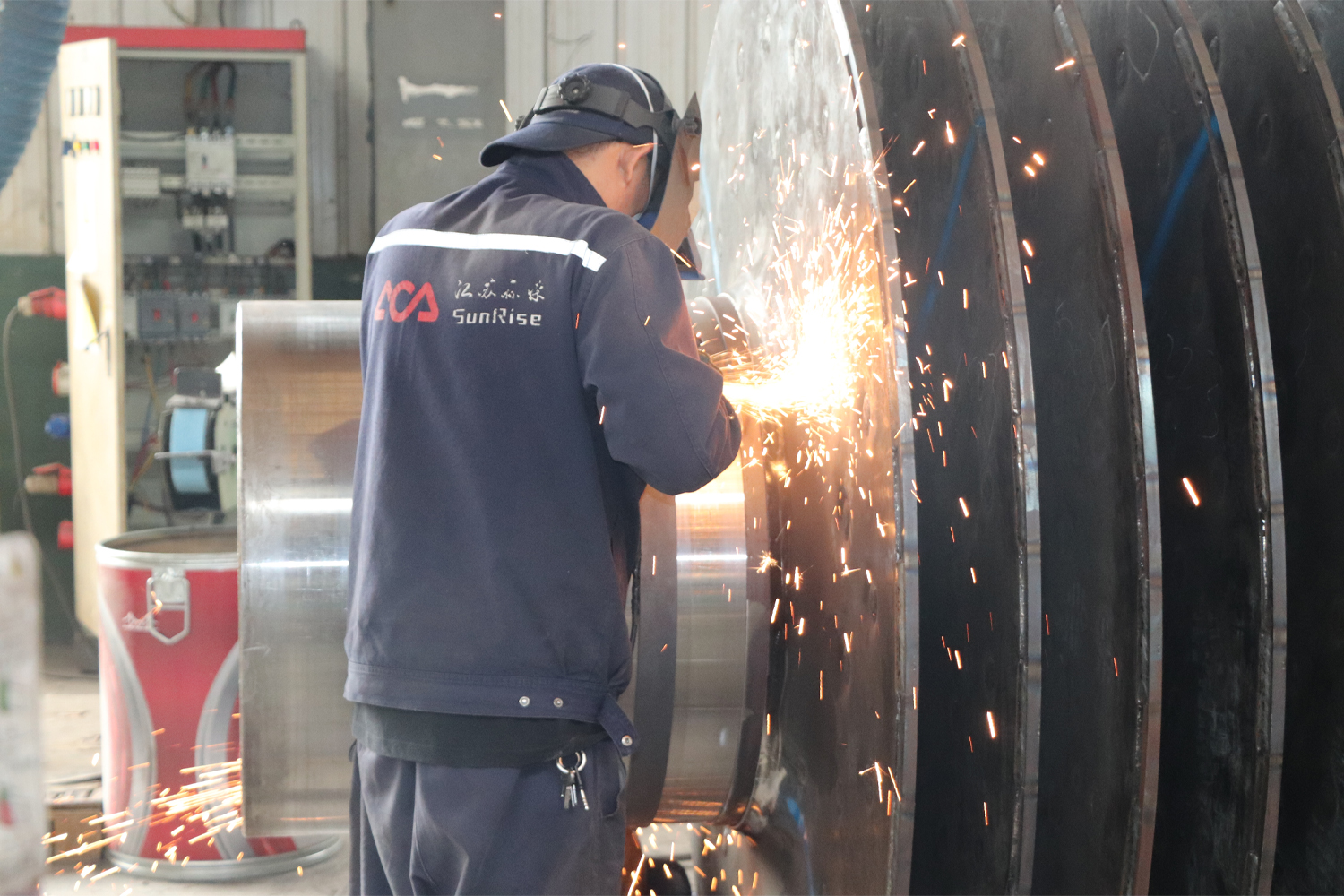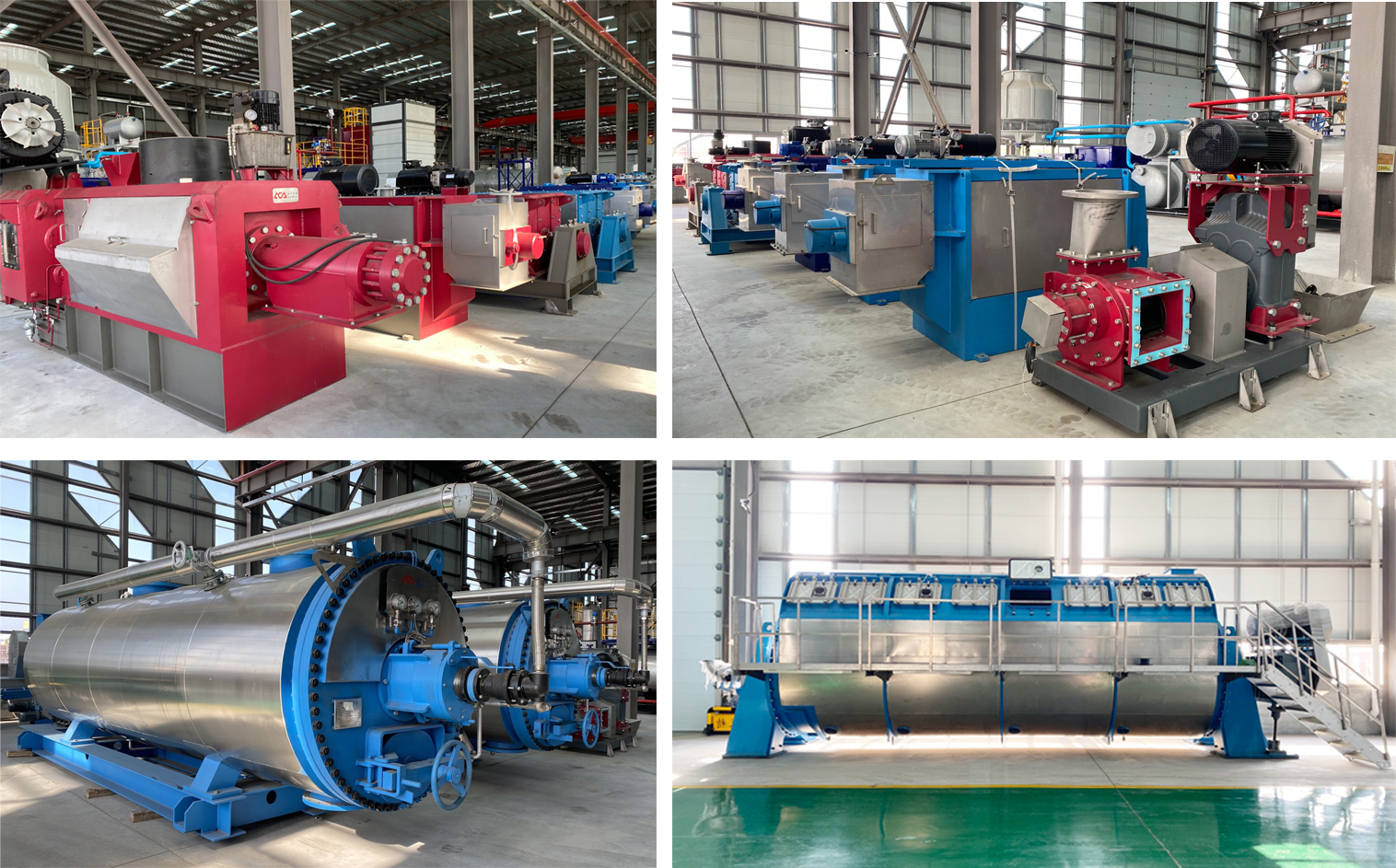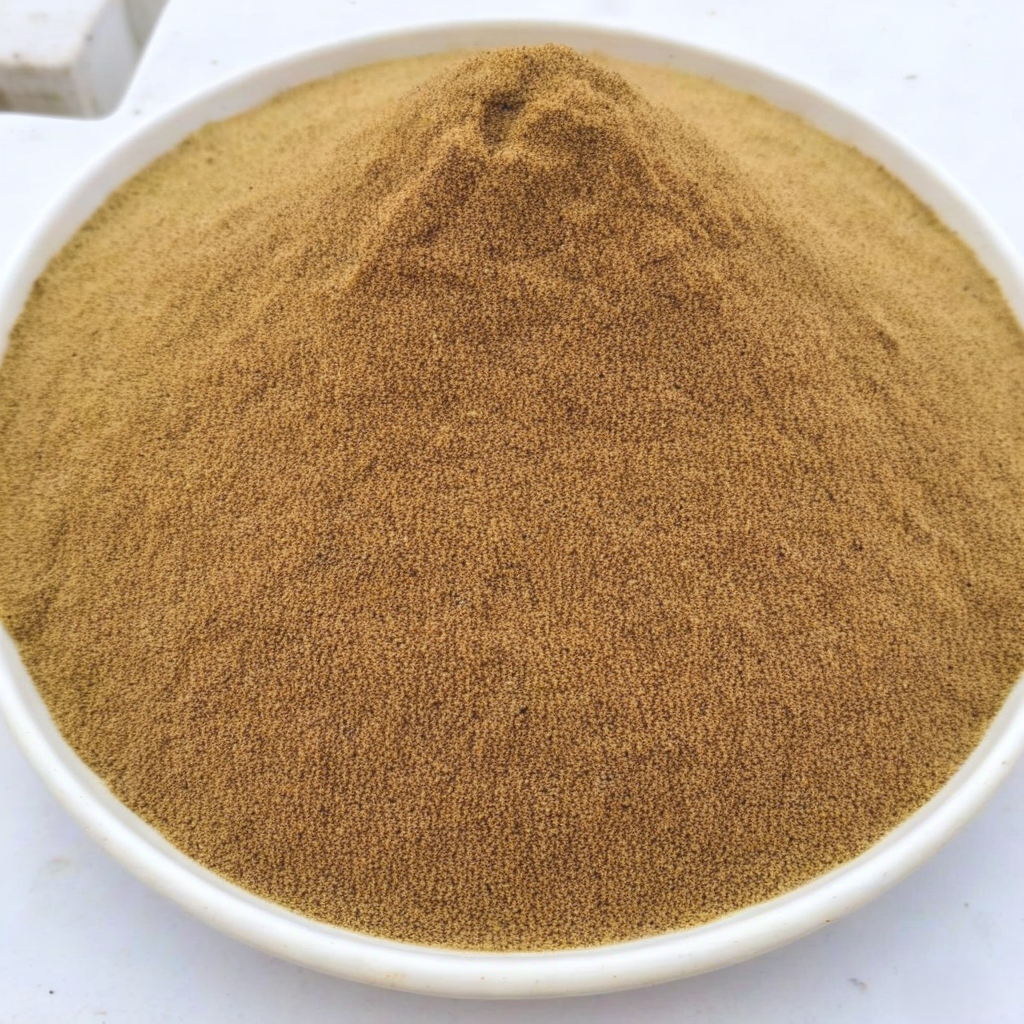
Screw Conveyors Everything You Need to Know About
Screw Conveyors Everything You Need to Know About

Screw conveyors are a crucial component in bulk material handling systems, providing efficient and reliable transportation of a wide range of materials. Whether you need to convey, feed, or elevate specific materials, screw conveyors offer a versatile solution. In this comprehensive guide, we will explore the different types of screw conveyors, their advantages, design considerations, and the leading screw conveyor company in the industry.
Types of Screw Conveyors
Horizontal Screw Conveyors
Horizontal screw conveyors are the most commonly used type of screw conveyor. They are designed to convey bulk materials from one part of a process to another. With a wide range of sizes, lengths, configurations, and materials of construction available, horizontal screw conveyors can be customized to suit various applications.
The trough loading of a horizontal screw conveyor depends on the material characteristics. Light, free-flowing, and non-abrasive bulk materials can be conveyed at a trough loading of 45 percent. Denser, sluggish, and more abrasive bulk materials typically require trough loadings of 15 or 30 percent.
The inlet of a screw conveyor is usually control fed by another device such as a screw feeder, belt conveyor, rotary airlock, or volumetric/gravimetric feeder. It is recommended to position the drive unit on the discharge end of the screw conveyor to reduce wear and fatigue on the conveyor components.
Advantages of using horizontal screw conveyors include:
- Ideal for conveying dry to semi-fluid bulk materials, from free-flowing to sluggish.
- Cost-effective compared to other conveying devices like belt conveyors or pneumatic systems.
- Efficient distribution of bulk materials to multiple locations using multiple inlet and discharge points.
- Totally enclosed design suitable for dusty, corrosive, or hazardous environments.
Inclined Screw Conveyors ,Application
Inclined screw conveyors operate from slightly above the horizontal position to 45 degrees from the horizontal. Beyond 45 degrees, an inclined screw conveyor is considered a vertical screw conveyor and must be designed accordingly.
The conveying efficiency of inclined screw conveyors is affected by the angle of incline, material characteristics, screw conveyor trough type, and screw pitch. It is recommended to design with the lowest possible degree of incline for maximum efficiency.
Design and construction features to consider when designing an inclined screw conveyor:
- Incline up to 10 degrees: Loss in efficiency is minimal on inclines up to 10 degrees. For most applications, a screw conveyor with U-trough and full pitch screw is sufficient. Loss in efficiency can be overcome by increasing the speed, diameter, or reducing the pitch of the screw.
- Incline between 10 and 20 degrees: Loss in efficiency is typically between 10 and 40 percent on inclines up to 20 degrees. A screw conveyor with U-trough and 2/3-pitch screw is recommended. Additional horsepower is required to overcome gravity and bulk material fall back.
- Incline between 20 and 30 degrees: Loss in efficiency is typically between 10 and 70 percent on inclines up to 30 degrees. A screw conveyor with tubular housing and reduced pitch screw is recommended. Increasing the speed or diameter of the screw conveyor is necessary. Additional horsepower is required to overcome gravity and bulk material fall back.
- Incline between 30 and 45 degrees: Loss in efficiency is typically between 30 and 90 percent on inclines up to 45 degrees. A screw conveyor with tubular housing, reduced pitch screw, and larger diameter is recommended. Increasing the speed of the screw conveyor is also required. Additional horsepower is necessary to overcome gravity and bulk material fall back.
Pitch Efficiency chart shows the relative conveying efficiency at different degrees of incline and pitch configurations. Reduced pitch screws and tubular housings provide the highest conveying efficiency as the degree of incline increases.
Pitch Efficiencies
Horsepower requirements for inclined screw conveyors increase with the degree of incline. The Horsepower Factor (Fi) is incorporated into the standard screw conveyor horsepower calculations to compensate for the additional horsepower required to overcome gravity and bulk material fall back.
TSHP (i) = Total Shaft HP for Inclined Screw Conveyor MHP = Material HP (HP required to move the material) FHP = Friction HP (HP required to drive the conveyor empty) Fi = Incline Factor e = Drive Efficiency
If the calculated Material Horsepower is less than 5HP, it should be corrected for potential overload using the Corrected Material HP Chart.
Upset Conditions
Screw conveyors located on inclines over 10 degrees must be designed to start and operate under upset conditions. An upset condition occurs when the normal flow in an inclined screw conveyor is interrupted, causing the bulk material inside the conveyor to slip back to the lower end, filling up the conveyor. Additional horsepower is required to restart and convey the bulk material because the conveyor experiences 100 percent trough loading temporarily. Consult the manufacturer for the proper design of inclined for upset conditions.
Shaftless Screw Conveyors
Shaftless screw conveyors are ideal for handling sticky, sluggish, or difficult-to-convey bulk materials. They provide a non-clogging conveying surface, allowing easy transportation of such materials. Shaftless screw conveyors are widely used in industries such as chemical processing, food, minerals processing, and wastewater treatment.
Advantages of shaftless screw conveyors include:
- Effective handling of sticky and sluggish bulk materials.
- Improved conveying efficiency compared to other types of conveyors.
- Greater flexibility in plant layout due to various configurations available.
- Elimination of internal bearings.
KWS Shaftless Screw Conveyors are known for their high strength alloy spirals, which are the hardest, strongest, and toughest in the industry. They are successfully used in various applications, from conveying catalysts to dewatered biosolids in wastewater treatment facilities.
Vertical Screw Conveyors
Vertical screw conveyors are highly efficient for elevating bulk materials at steep inclines or vertically. Any screw conveyor located on an incline over 45 degrees is considered a vertical screw conveyor. With a compact design and minimal moving parts, vertical are cost-effective and reliable components of bulk material handling systems.
Advantages of vertical screw conveyors:
- Ideal for handling dry to semi-fluid materials.
- Capacities of up to 6,000 cubic feet per hour.
- Ability to elevate bulk materials up to 30 feet without the need for internal bearings.
- Totally enclosed design for dust and vapor-tight requirements.
KWS designs and supplies vertical screw conveyors for various industries, including chemical processing, minerals processing, food, wood products, and wastewater treatment. Their shaftless vertical screw conveyor design is particularly popular in wastewater treatment facilities for elevating dewatered biosolids.
Inlet sections of vertical screw conveyors can be offset to either side or in-line. Horizontal feed conveyors are used to accurately meter bulk materials directly to the vertical conveyor’s inlet for maximum efficiency.
For more information on vertical screw conveyors, refer to the KWS Vertical Screw Conveyor Engineering Guide available on their website.
The Leading Screw Conveyor Company: Screw Conveyor Corporation
Founded in 1932, Screw Conveyor Corporation is a trusted manufacturer of bulk material handling equipment. With over 85 years of experience, they have become one of the nation’s most experienced manufacturers in the industry. Their commitment to technology, reliability, and craftsmanship has fueled their continued growth.
Screw Conveyor Corporation offers a comprehensive range of bulk material handling equipment, including screw conveyors, drag conveyors, vertical lifts, and bucket elevators. They provide complete customized solutions and replacement parts to meet the specific needs of their clients.
As a family-led business, Screw Conveyor Corporation values their legacy and strives to deliver high-quality products that they stand behind. Their expertise and knowledge have made them a reliable choice for companies in need of bulk material handling solutions.
Contact Screw Conveyor Corporation, North America’s leading screw conveyor company, today for all your bulk material handling needs.
Conclusion
Screw conveyors are essential components in bulk material handling systems, offering efficient and reliable transportation of various materials. Horizontal, inclined, shaftless, and vertical screw conveyors provide versatile solutions for conveying, feeding, and elevating bulk materials. Understanding the design considerations and advantages of each type of screw conveyor is crucial for selecting the right solution for your specific needs.
When it comes to reliable and high-quality screw conveyors, Screw Conveyor Corporation stands out as a leading manufacturer with decades of experience. Their commitment to technology, reliability, and craftsmanship has made them a trusted choice for companies in need of bulk material handling solutions.
For more information on screw conveyors and to explore the wide range of products offered by Screw Conveyor Corporation, visit their website or contact them directly. Choose Screw Conveyor Corporation for all your bulk material handling needs.



